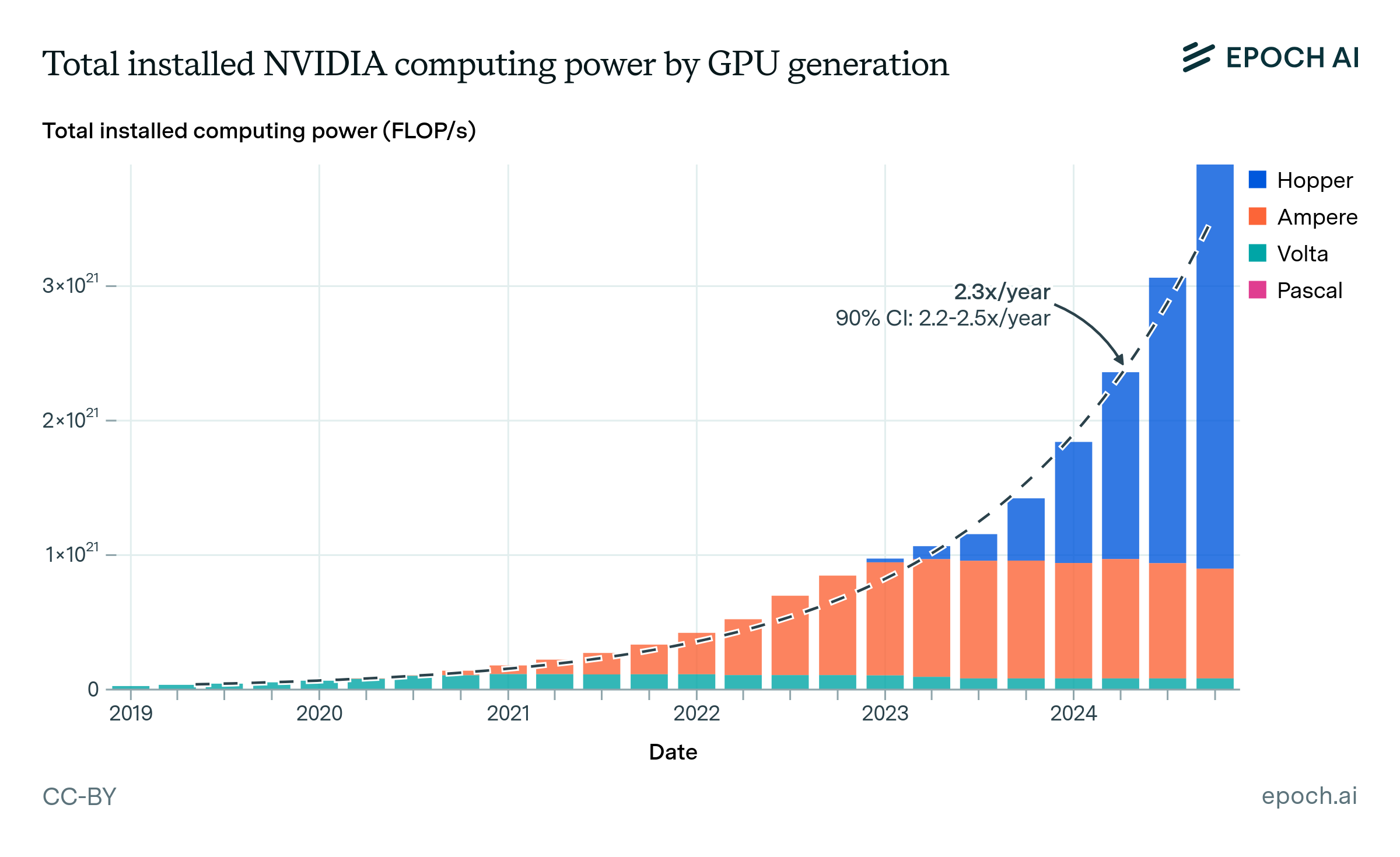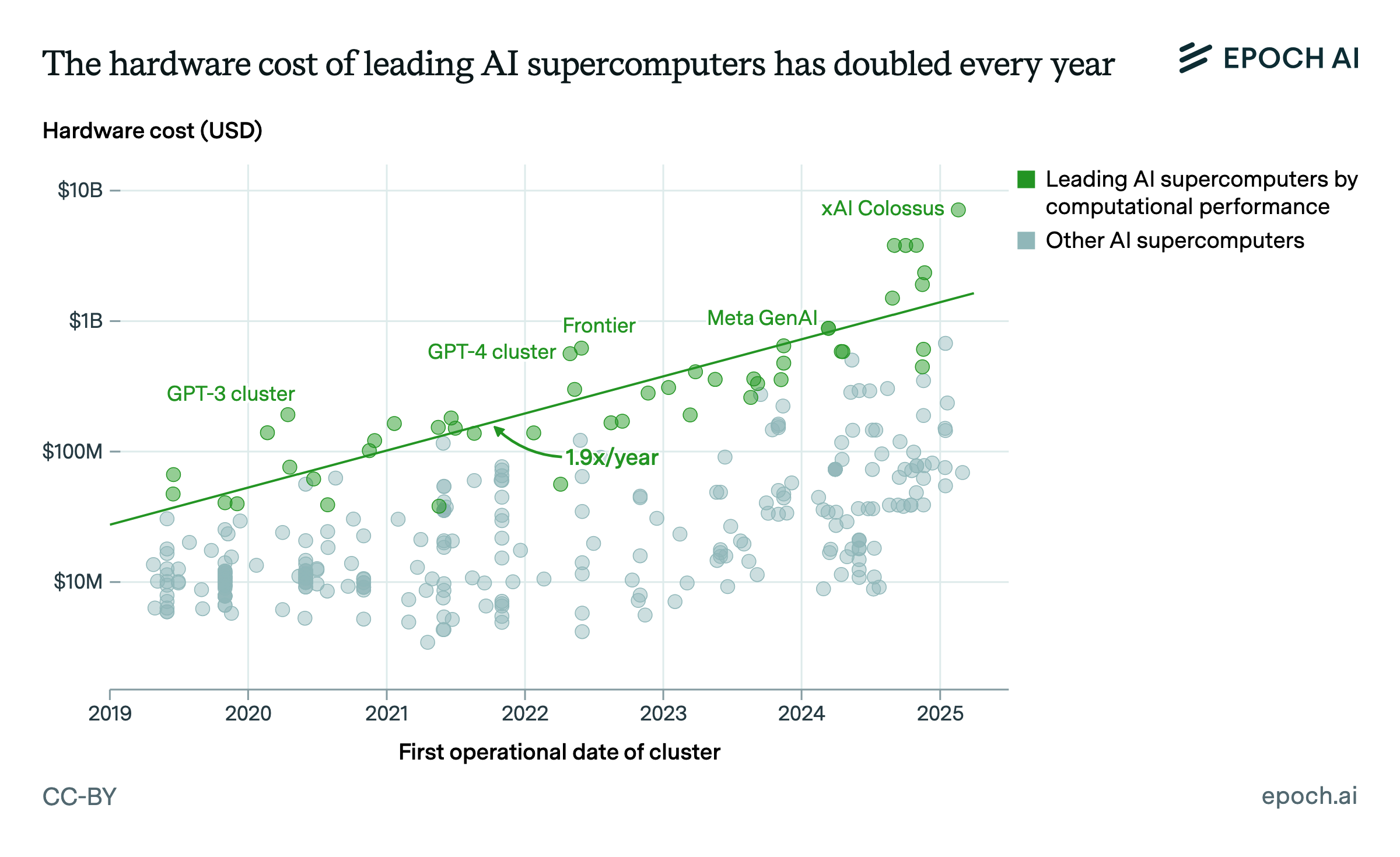Private-sector companies own a dominant share of GPU clusters
The private sector’s share of global AI computing capacity has grown from 40% in 2019 to 80% in 2025. Though many leading early supercomputers such as Summit were run by government and academic labs, the total installed computing power of public-sector clusters has only increased at 1.8x per year, rapidly outpaced by private-sector clusters, whose total computing power has grown at 2.7x per year. The rising economic importance of AI has spurred the private sector to build more and faster clusters for training and inference.

As of May 2025, the largest known public AI supercomputer, Lawrence Livermore’s El Capitan, achieves less than a quarter of the computational performance of the largest known industry cluster, xAI’s Colossus.
Published
June 5, 2025
Learn more
Data
Data come from our GPU Clusters dataset, which collects information on 728 clusters with dedicated AI accelerators, spanning from 2010 to the present. We estimate that these clusters represent approximately 10-20% (by performance) of all AI chips produced before 2025.
We categorize clusters as public if they were built by academic or government institutions, private if they were built by for-profit companies, and public-private if both types of organizations were involved, or if a government contributed at least 25% of funding to a private project.
For more information about the data, see Pilz et. al., 2025, which describes the clusters dataset and analyzes key trends, and the dataset documentation.
Analysis
The dataset is filtered to clusters that have known public/private status, first operational date, and 16-bit computational performance, leaving us with 427 clusters. For each day beginning on January 1, 2019, we sum the 16-bit operations-per-second of every cluster whose launch date is on or before that day (this includes 76 systems from before 2019, with the earliest dating back to November 15, 2010). We then divide each sector’s running total by the overall cumulative compute on that date to get its share of total performance, and plot the shares as a stacked bar chart.
To obtain estimates of our uncertainty, we bootstrap resample (n=1000) and calculate 90% confidence intervals for the cumulative shares for each sector:
| Sector | Share as of May 2025 |
|---|---|
| Public | 80% (69 - 87%) |
| Public / Private | 11% (5 - 18%) |
| Private | 9% (5 - 16%) |
Assumptions and limitations
- Since private clusters are less likely to publicize their details than those built by public organizations, the public share appears higher than its true fraction.
- While our main figure does not display confidence intervals, it should be noted that our dataset covers about 10-20% of total AI computing capacity as of 2025, relative to the world’s cumulative supply of AI chips manufactured (for further detail, see Appendix C.1.1 and C.3.1 in Pilz et. al.).





